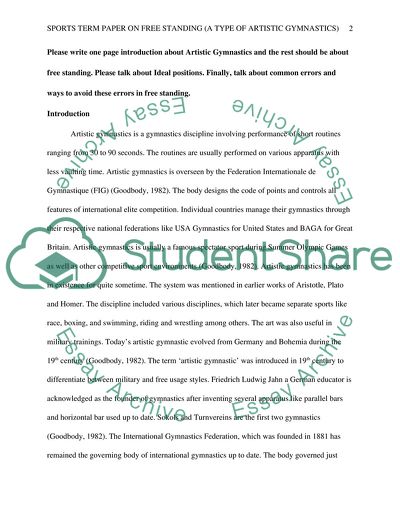Cite this document
(Free Standing as a Type of Artistic Gymnastics Term Paper, n.d.)
Free Standing as a Type of Artistic Gymnastics Term Paper. https://studentshare.org/sports-and-recreation/1828177-sports-term-paper-on-free-standing-a-type-of-artistic-gymnastics
Free Standing as a Type of Artistic Gymnastics Term Paper. https://studentshare.org/sports-and-recreation/1828177-sports-term-paper-on-free-standing-a-type-of-artistic-gymnastics
(Free Standing As a Type of Artistic Gymnastics Term Paper)
Free Standing As a Type of Artistic Gymnastics Term Paper. https://studentshare.org/sports-and-recreation/1828177-sports-term-paper-on-free-standing-a-type-of-artistic-gymnastics.
Free Standing As a Type of Artistic Gymnastics Term Paper. https://studentshare.org/sports-and-recreation/1828177-sports-term-paper-on-free-standing-a-type-of-artistic-gymnastics.
“Free Standing As a Type of Artistic Gymnastics Term Paper”. https://studentshare.org/sports-and-recreation/1828177-sports-term-paper-on-free-standing-a-type-of-artistic-gymnastics.


